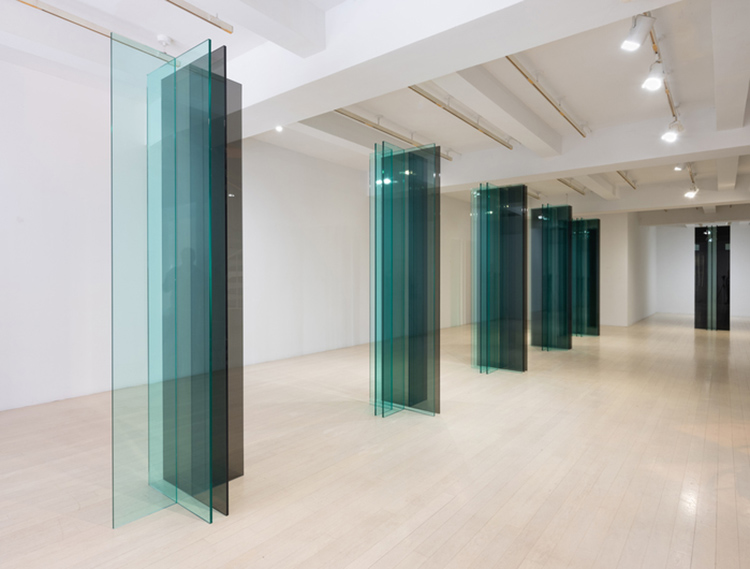ART CITIES:N.York-Robert Irwin
 For over six decades, Robert Irwin) has explored perception as the fundamental issue of art. Irwin, who began his career as a painter in the 1950s and became a pioneer of the “Light and Space” movement in the 1960s, has, through a continual breaking down of the frame, come to regard the role of art as “conditional”—working within and responding to the specific surrounding world of experience.
For over six decades, Robert Irwin) has explored perception as the fundamental issue of art. Irwin, who began his career as a painter in the 1950s and became a pioneer of the “Light and Space” movement in the 1960s, has, through a continual breaking down of the frame, come to regard the role of art as “conditional”—working within and responding to the specific surrounding world of experience.
By Dimitris Lempesis
Photo: Pace Gallery Archive
Robert Irwin presents seven new column sculptures comprised of colored acrylic panels that defy the viewer’s certainty of the space being perceived in his solo exhibition “New Sculpture/Configurations” at Pace Gallery in New York. As the artist states: “As artists, the one true inquiry of art as a pure subject is an inquiry of our potential to know the world around us and our actively being in it, with a particular emphasis on the aesthetic. This world is not just somehow given to us whole. We perceive, we shape… we discover and give value to our human potential to ‘see’ the infinite richness (beauty?) in everything, creating an extended aesthetic reality”. One of the pivotal figures in recent American art, Robert Irwin’s career has spanned a period of more than 50 years. His site-responsive works aim to refocus the habituated eye, posing questions rather than providing answers and encouraging the viewer to be made aware, afresh, of the visual field around them. Irwin has said about his art that he tries to ‘open up things’ and ‘just allow them to happen’, but also that ‘the pure subject of art is human perception’: a conditional activity determined by context. Irwin began his career in the late 1950s making Abstract Expressionist paintings which were at first gestural and intense and then developed into minimal studies in form and color, sometimes on shaped canvases. His interest in perceptual phenomena soon took him beyond notions of object making and the studio, and he began to make art in response to a particular site, or to a set of conditions, switching his focus to energy and process rather than material and object. A leading exponent of the “Light and Space” movement, Irwin’s installations employ light, string and scrim to create subtle alterations in physical space. Architectural in scale, his works emphasise and expose particular spatial and perceptual experiences, for example by painting walls a particular colour; suspending panels to create a focused space beneath (Pure Space, 1990), or using taut panels of material scrim to change and intervene in specific architectural details (Square the Room, 2007). Panels of scrim stretched on wooden frames are also used to create sequential walls or chambers, whose color is manipulated and harnessed to potent effect, using coloured gels over fluorescent lights. In this way, a physically perceptual passage for the viewer is created through works that, instead of emphasising their presence, recede through their light translucency and act like brackets for our phenomenological experience. Irwin’s charged use of color relates to the work of Josef Albers as well as to those of Barnett Newman to whom he made a titular homage in the work “Who’s Afraid of Red, Yellow & Blue” (2006-07), composed of vast matching panels of single reflective colors placed over floor and ceiling to energise and expose the volume between them.
Info: Pace Gallery, 32 East 57th Street, New York, Duration: 11/5-17/8/18, Days & Hours: Mon-Thu 10:00-18:00, Fri 10:00-16:00, www.pacegallery.com


